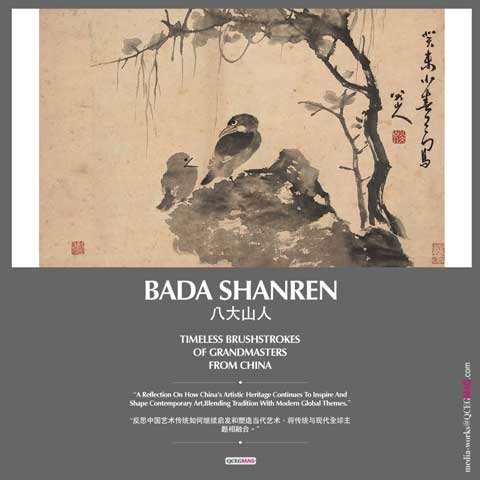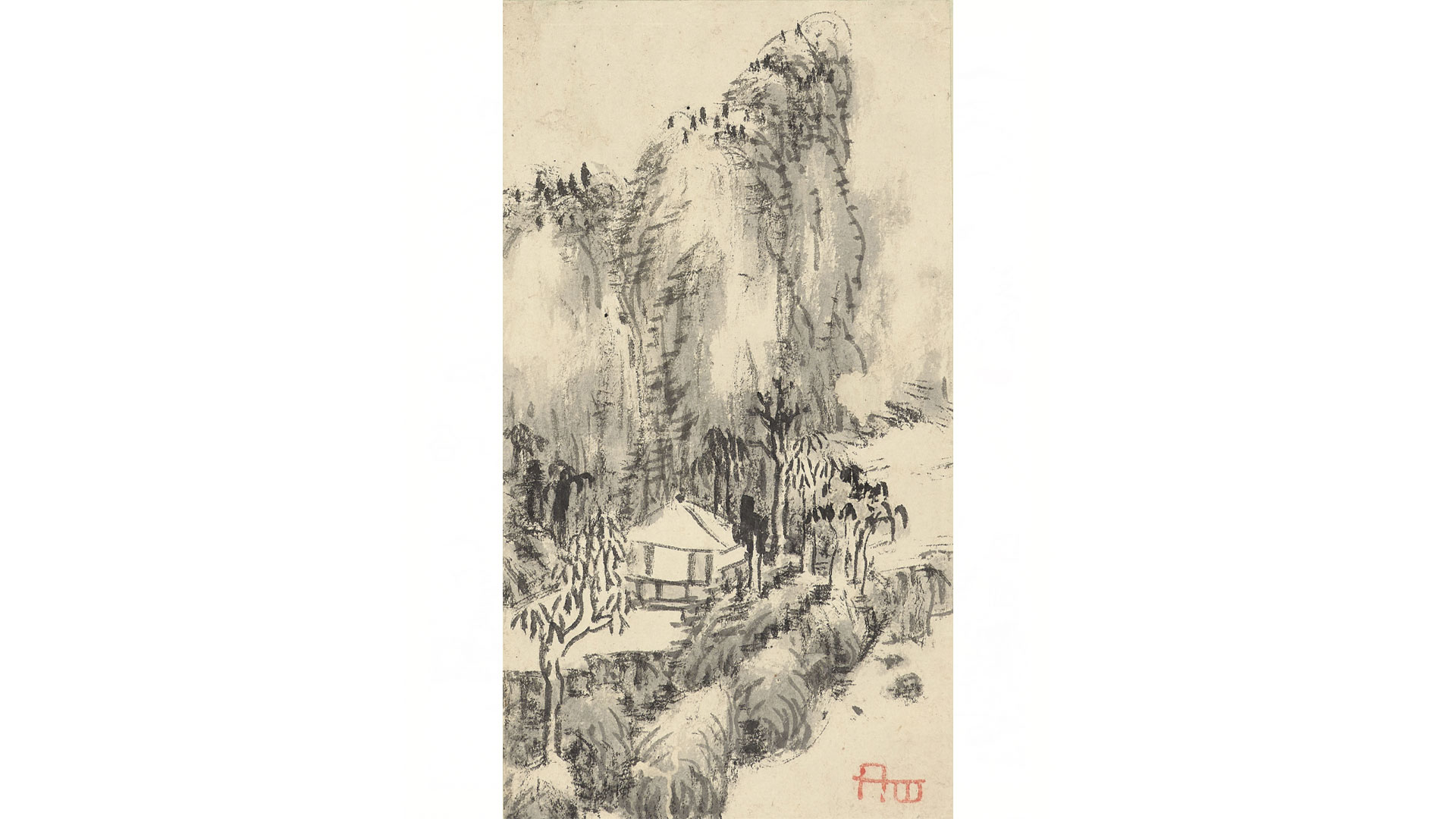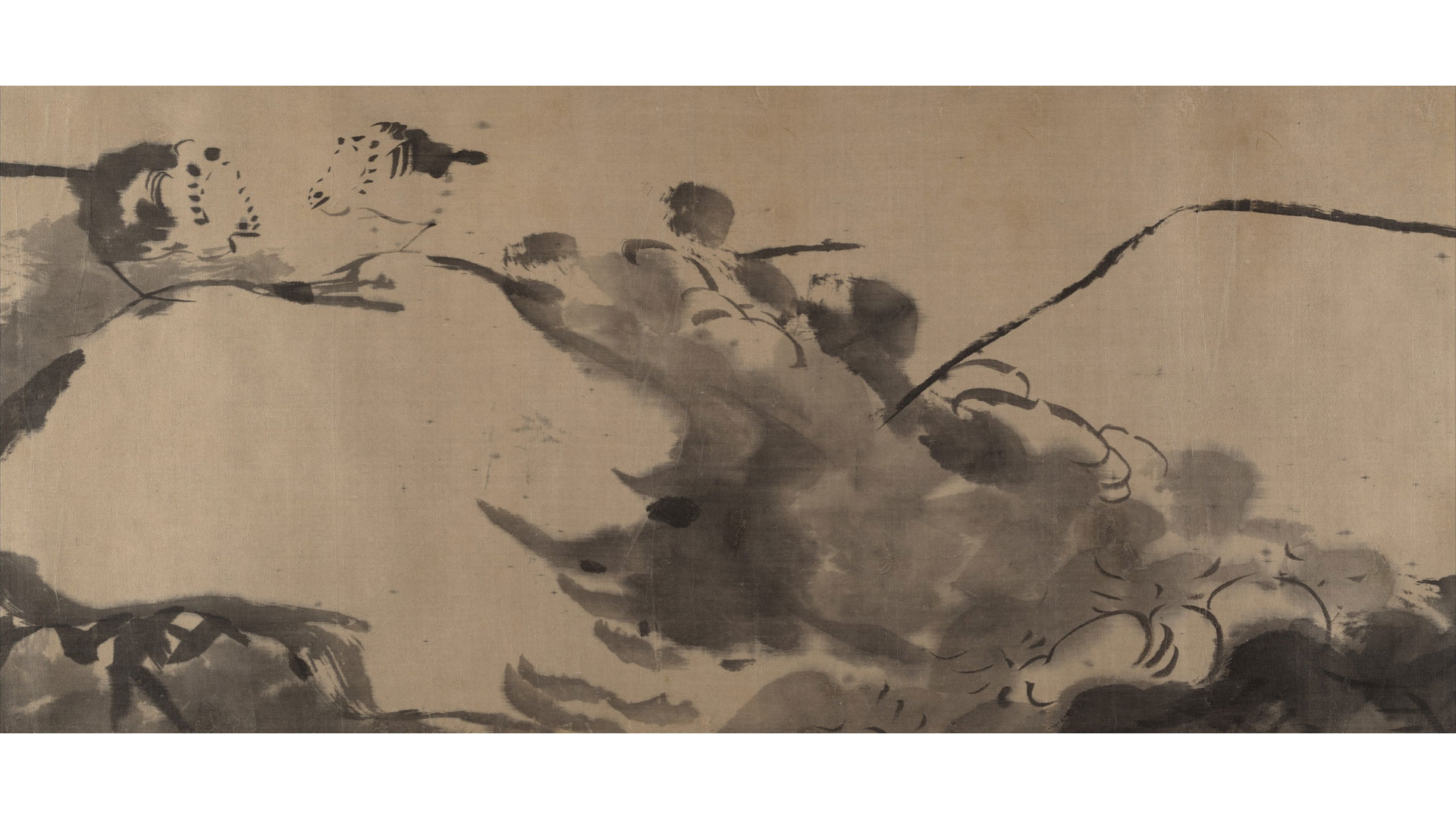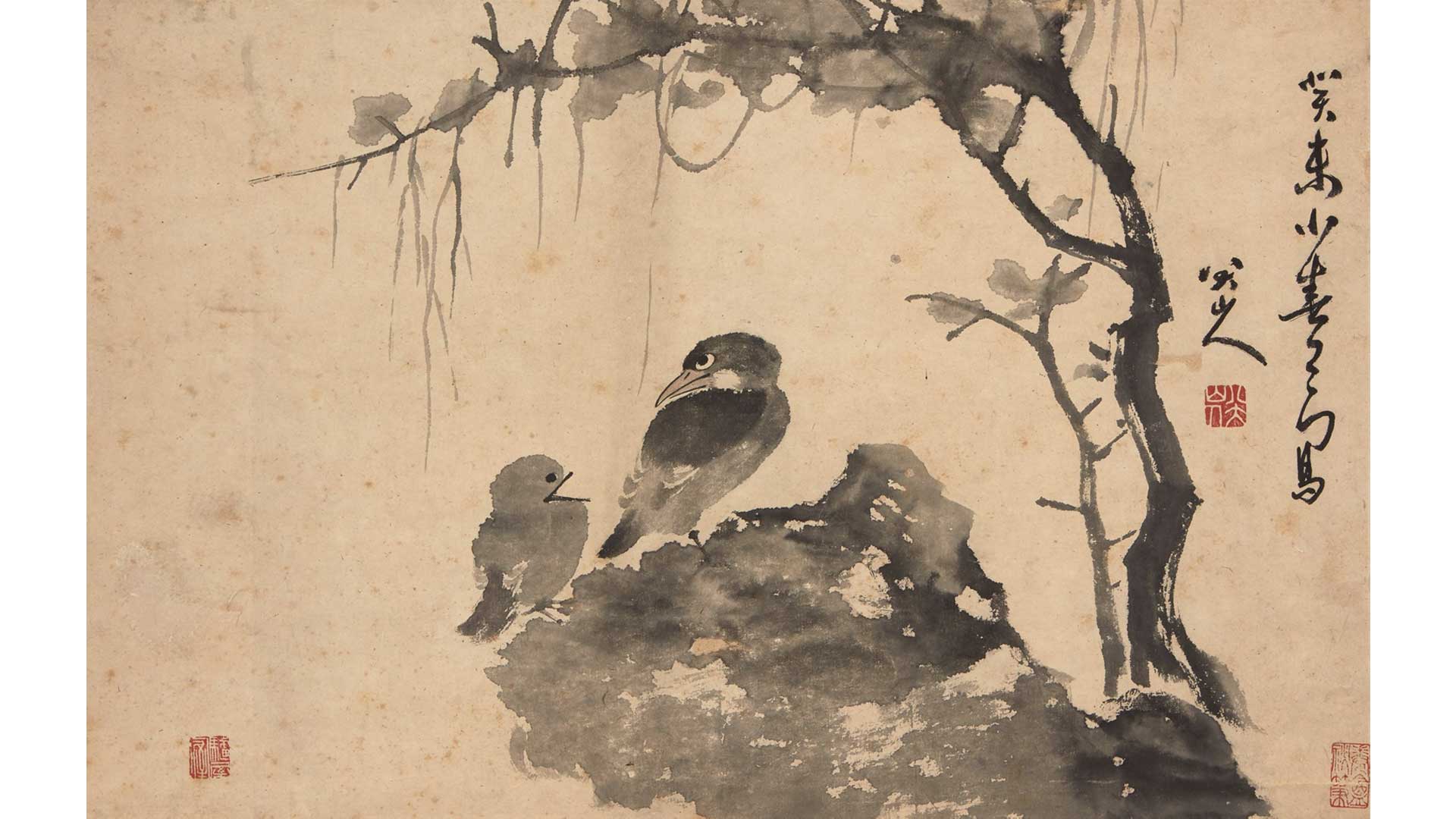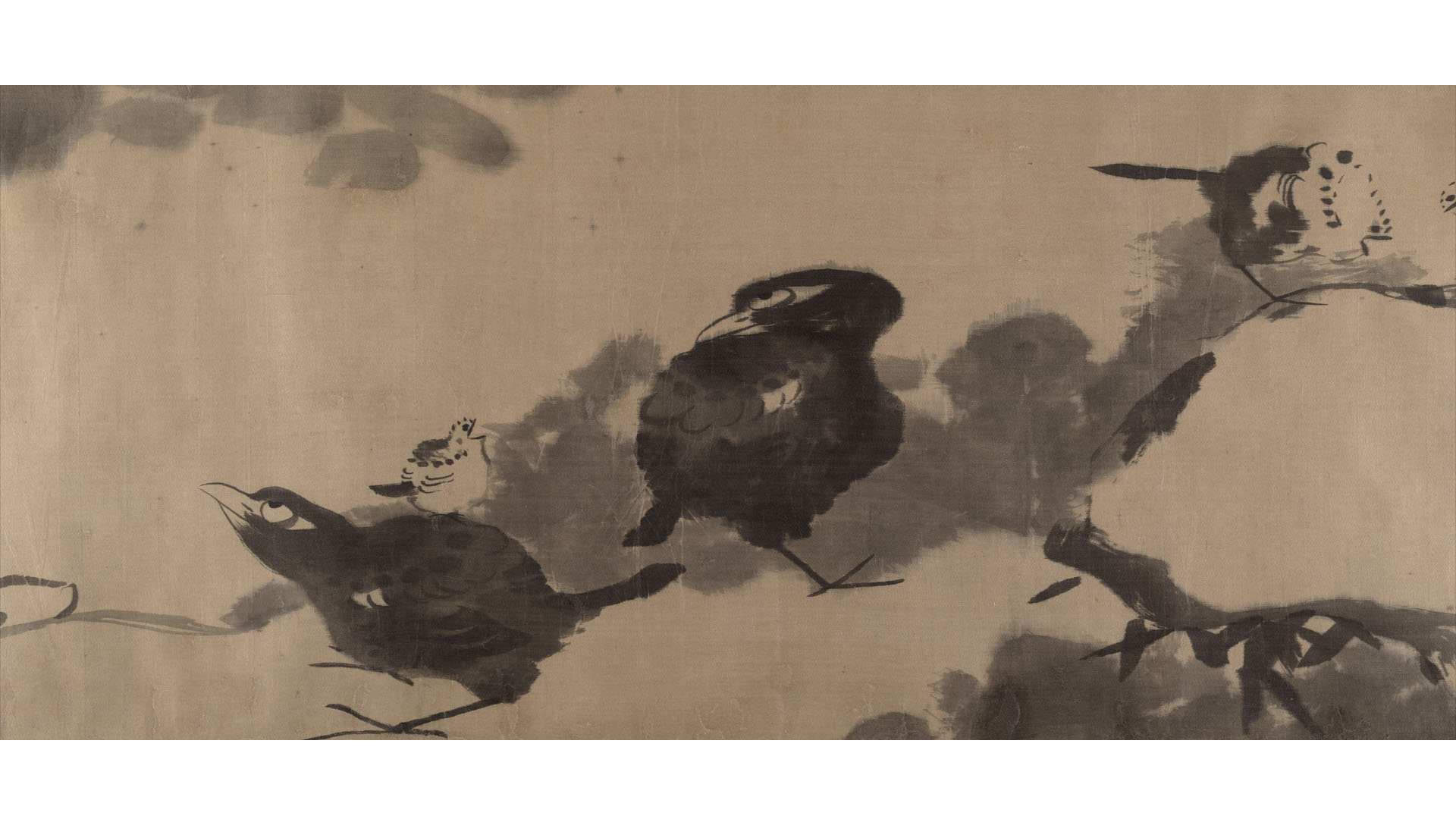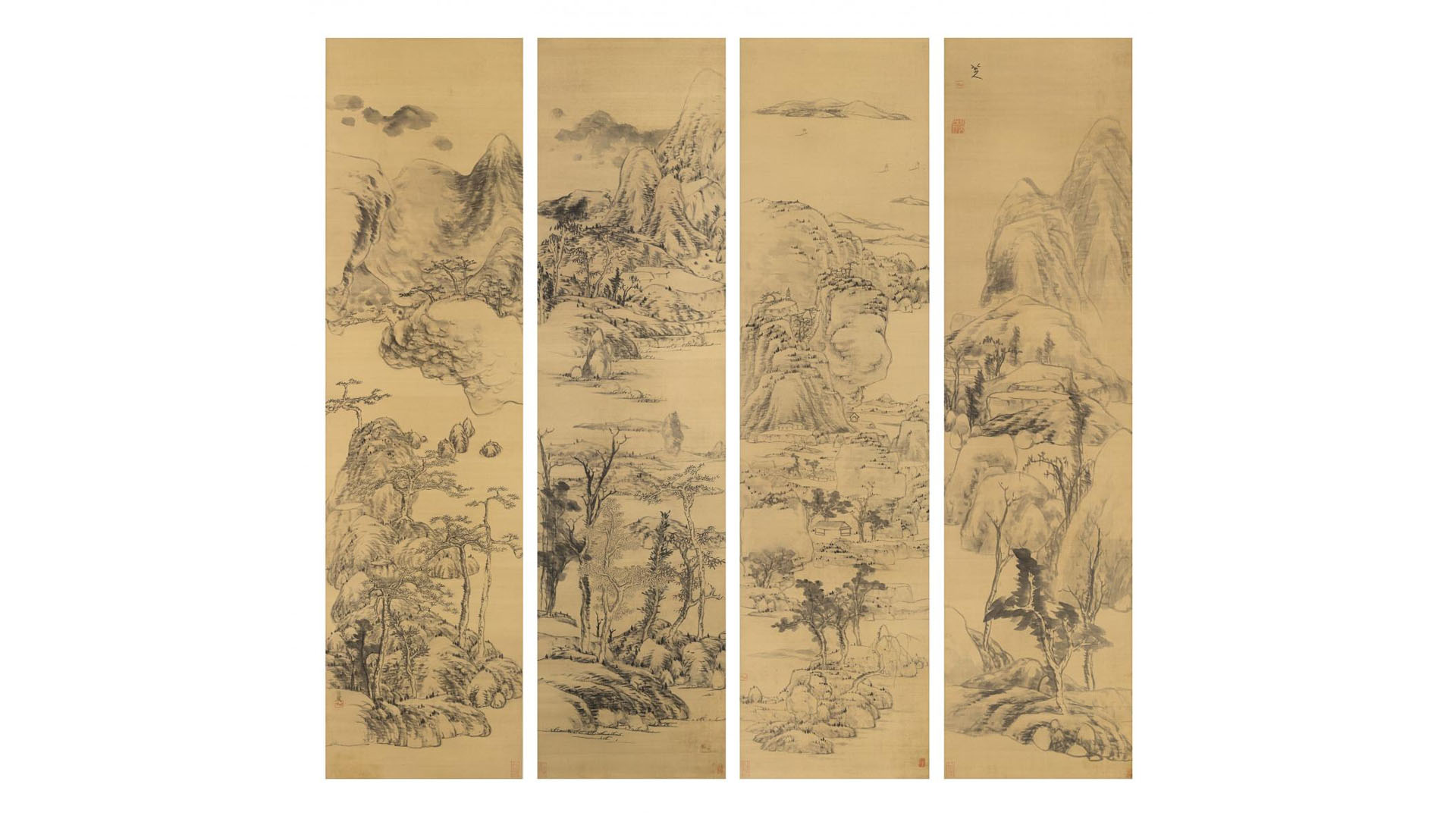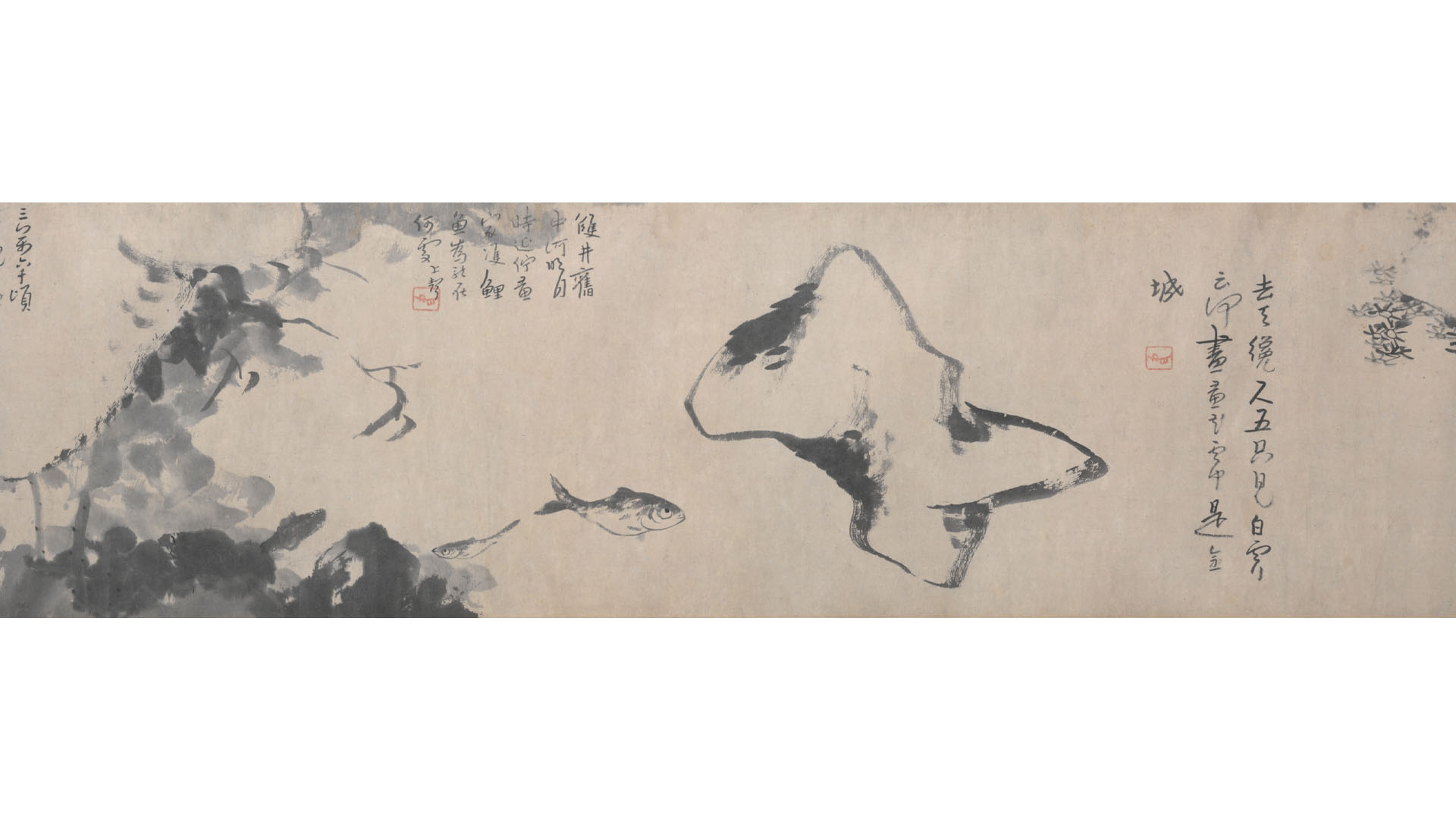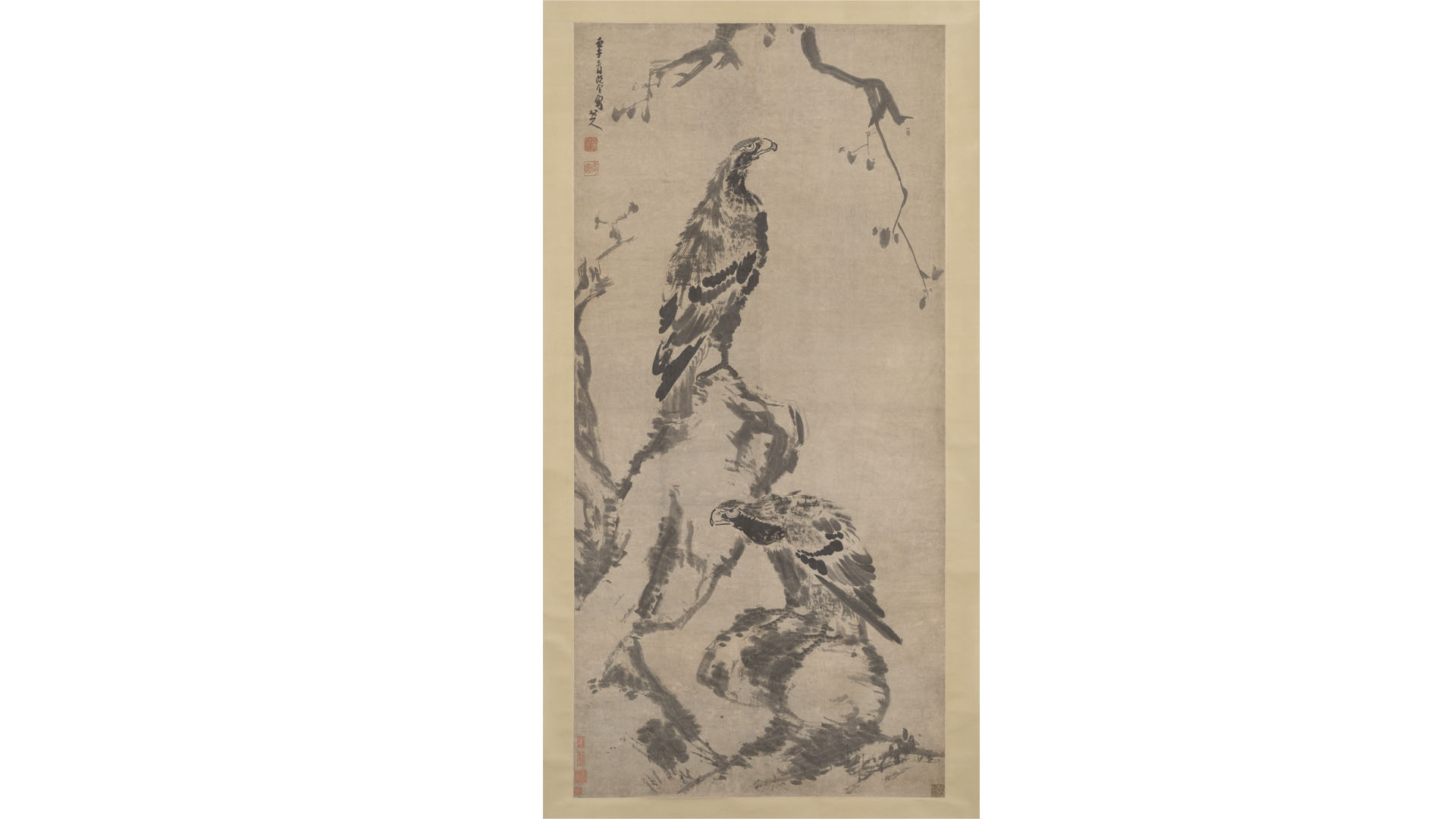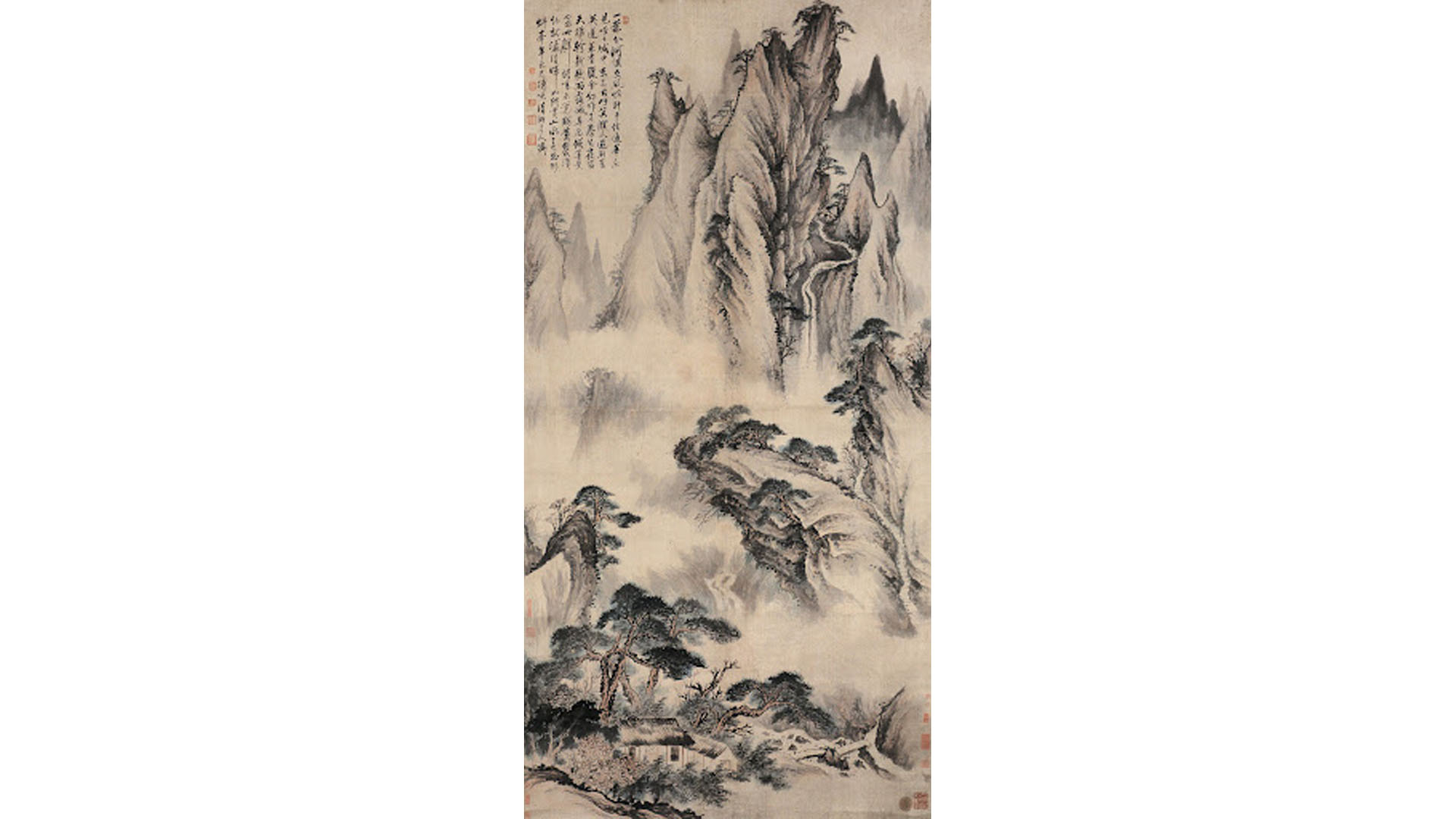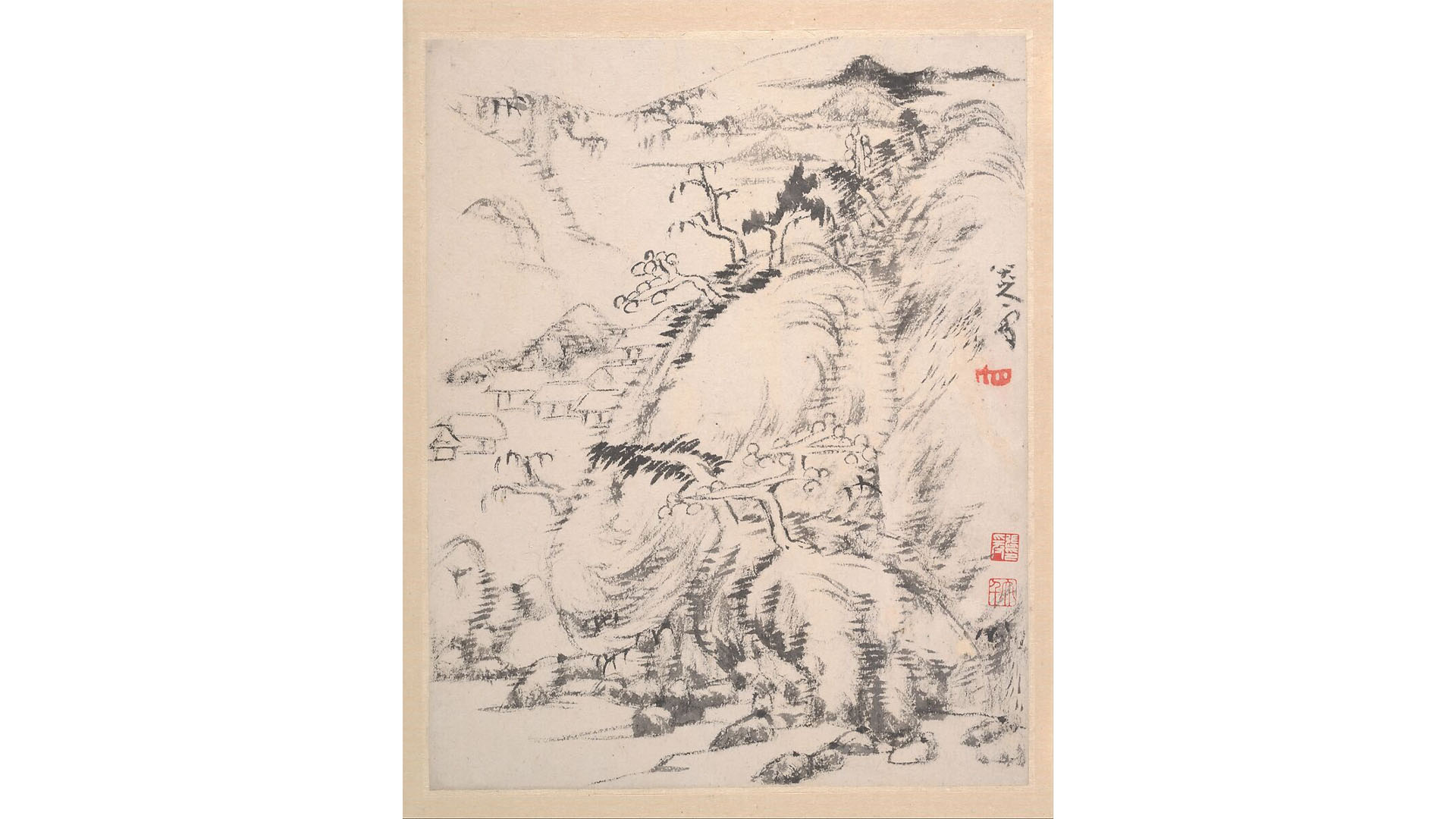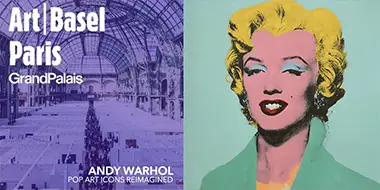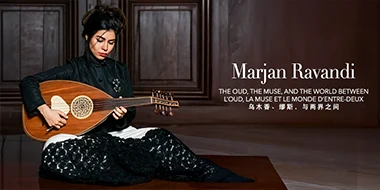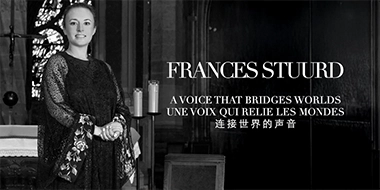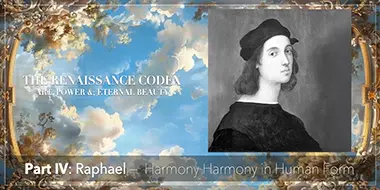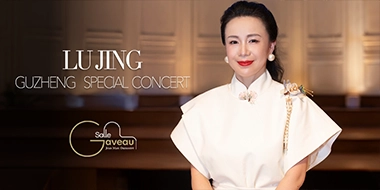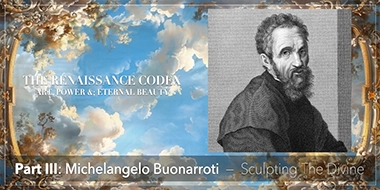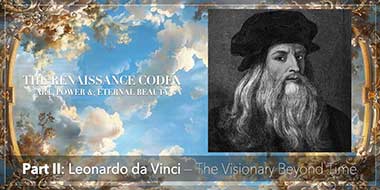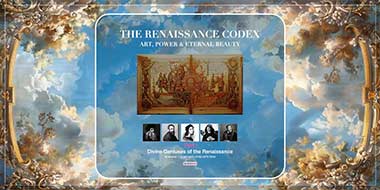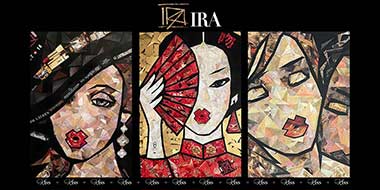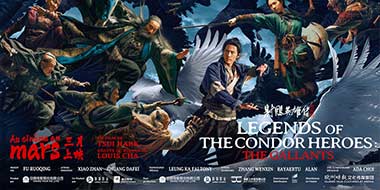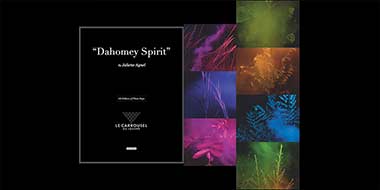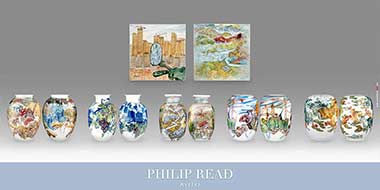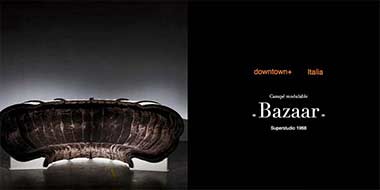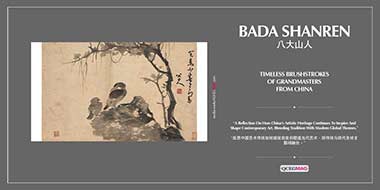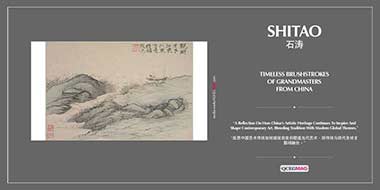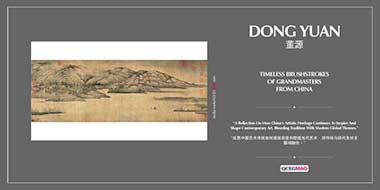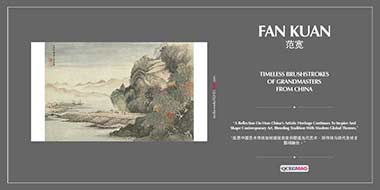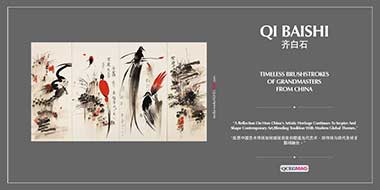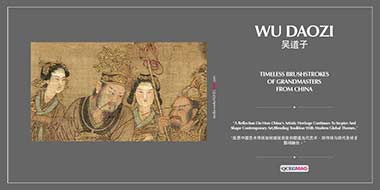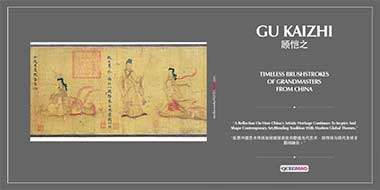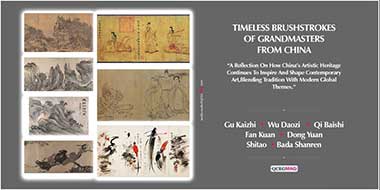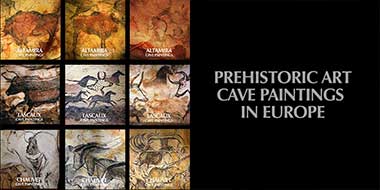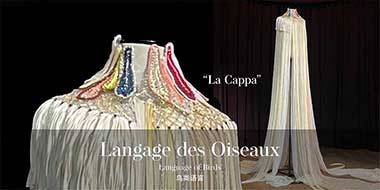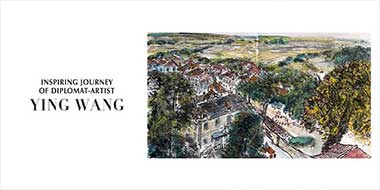BADA SHANREN
“Bada Shanren, A Ming Royal Descendant, Was A Master Painter Known For His Minimalist, Symbolic Works, Reflecting Political Discontent And Deep Personal Emotions.”
BY MEEKAR - 24 AUGUST 2024
Bada Shanren (八大山人), also known as Zhu Da (朱耷), was a highly influential Chinese painter and calligrapher during the late Ming and early Qing dynasties. Born in 1626 in Nanchang, Jiangxi Province, he was a member of the Ming royal family, which significantly shaped his life and art. His birth name, Zhu Da, reflects his royal lineage, as the Ming emperors belonged to the Zhu clan.
Bada Shanren was born into a tumultuous period of Chinese history. As the Ming dynasty fell to the Manchu-led Qing dynasty in 1644, many members of the Ming royal family were either killed or fled. Zhu Da, fearing persecution due to his imperial background, chose to live in seclusion, adopting the life of a monk to obscure his identity. He joined a Buddhist monastery, taking on the monastic name “Bada Shanren,” which translates to “The Mountain Man of the Eight Greats.”
This spiritual retreat and loss of status profoundly influenced his artistic style and worldview. Although he sought solace in Buddhism, he was unable to entirely escape the emotional toll of the Ming dynasty’s downfall. Many scholars interpret Bada Shanren’s artwork as reflecting his inner turmoil and the psychological burden of his lost heritage.
— MeeKar
BADA SHANREN
“Bada Shanren, A Ming Royal Descendant, Was A Master Painter Known For His Minimalist, Symbolic Works, Reflecting Political Discontent And Deep Personal Emotions.”
Artistic Style And Themes
Bada Shanren’s works are noted for their eccentricity, abstraction, and symbolic depth. His unique painting style emerged in the literati (scholar-artist) tradition, which emphasised personal expression over realism or technical perfection. He is especially well-known for his depictions of natural subjects such as birds, flowers, rocks, and fish, but these images carried deeper meanings.
Symbolism and Expression: His paintings often contain subtle and coded messages reflecting his discontent with the political situation of the time. For instance, birds with sharp, piercing gazes or fish with an air of aloofness were thought to symbolize his frustration and sadness over the Qing conquest. These creatures, painted in isolated settings, may reflect the painter’s own sense of alienation and loss. At times, the expressions of the animals in his works are interpreted as sarcastic or even mocking, indicating a deeper layer of satire against the ruling Qing government.
Calligraphy: Bada Shanren was also a master calligrapher, with his works reflecting a wide range of emotions. His calligraphy is often described as spontaneous, yet controlled, with erratic brushstrokes that seem to balance intensity with elegance. His inscriptions frequently accompany his paintings, imbuing his works with philosophical depth and providing insight into his thoughts and emotions.
Minimalism and Abstraction: One of the most striking aspects of his work is its minimalism. In contrast to the detailed and intricate paintings of earlier periods, Bada Shanren’s works often feature sparse compositions. The use of empty space, or “negative space,” is significant in his paintings, conveying a sense of emptiness or void, possibly a reflection of his Buddhist beliefs in the transience of life. His brushstrokes are bold and abstract, often interpreted as expressive of his inner mental state.
Life As A Hermit And Later Years
In his later years, Bada Shanren returned to secular life but continued to maintain an air of eccentricity and isolation. He was described as emotionally unstable, and legend has it that he once pretended to be mute to avoid communicating with others, only to suddenly burst out laughing or crying, adding to his mysterious aura.
Despite his reclusion, his fame as an artist grew, and his works were admired by scholars and officials alike. Bada Shanren’s art became increasingly experimental as he aged, with his brushstrokes becoming more abstract and his compositions more minimalist. He painted with increasing freedom and abandon, and some of his later works border on the avant-garde, making him a precursor to modern Chinese art in many ways.
Influence And Legacy
Bada Shanren is considered one of the “Four Monks,” a group of four painters (along with Shitao, Kuncan, and Hongren) who lived during the transitional period from the Ming to the Qing dynasty. His influence on Chinese art is profound, as he broke away from traditional conventions and introduced new forms of expression that were more personal, emotional, and symbolic.
His works have been studied and admired for centuries, not only for their technical mastery but also for the depth of feeling they convey. Bada Shanren is often regarded as a symbol of resistance to authority, as his art reflects a deep melancholy and sense of loss associated with the fall of the Ming dynasty. His minimalist style and symbolic imagery also made him a forerunner of later movements in Chinese painting.
In modern times, Bada Shanren’s work continues to inspire contemporary artists in China and beyond. His ability to blend political commentary, personal emotion, and spiritual reflection into a unified artistic vision makes him one of the most significant figures in Chinese art history.
Bada Shanren’s life and art were deeply intertwined with the turbulent history of his time. A descendant of the Ming royal family, his work reflects the complex emotions of an artist in exile—both physical and emotional. His minimalist, abstract style and symbolic use of animals and landscapes have left an indelible mark on Chinese painting. Bada Shanren’s legacy as a painter, calligrapher, and eccentric recluse continues to resonate, offering profound insights into the power of art as a means of personal and political expression.






